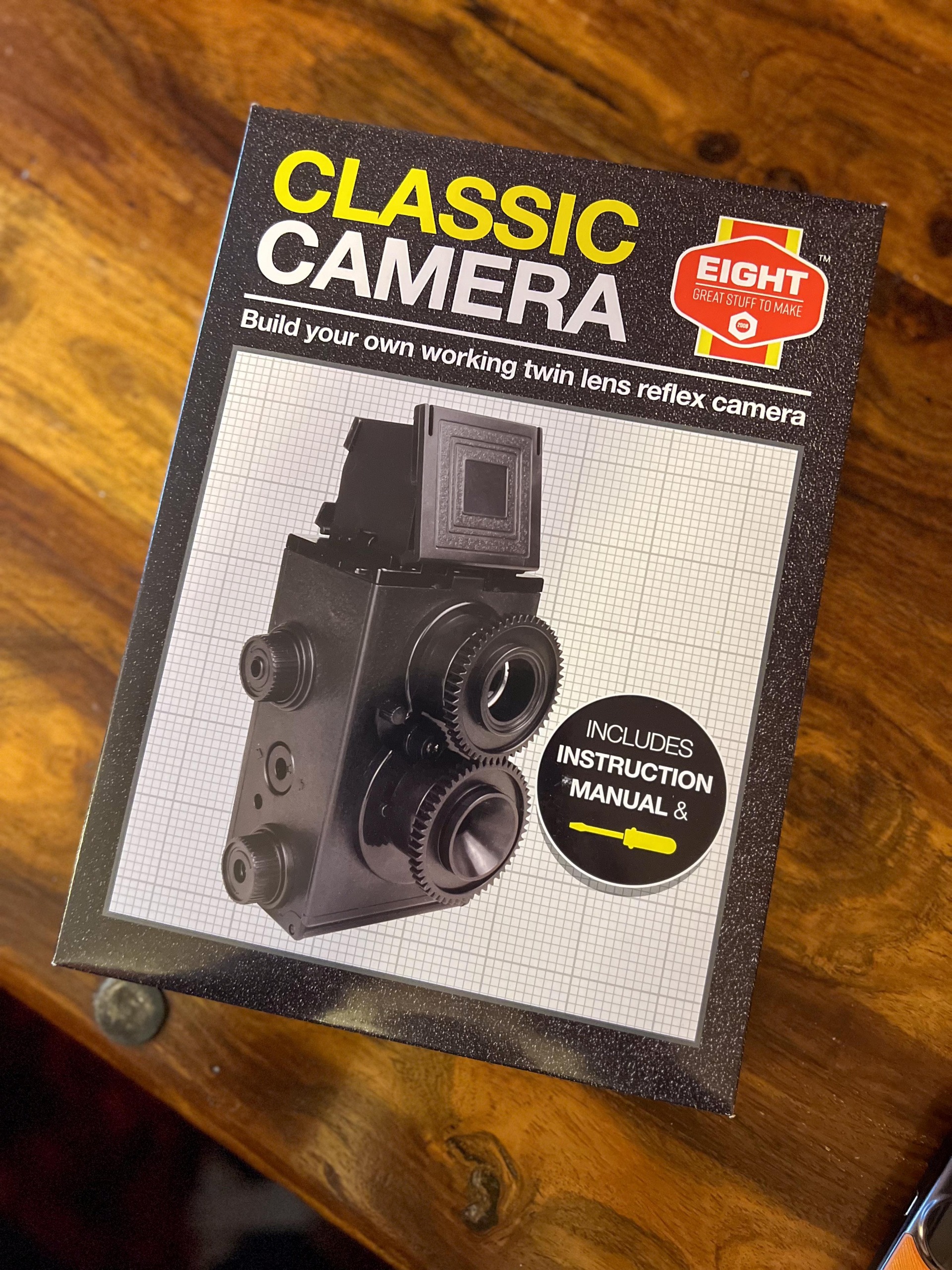
Build Your Own Twin Lens Reflex Camera: A Journey into Film Photography
One of my most exciting gifts this Christmas was a “Build Your Own Twin Lens Reflex Camera” kit. As someone passionate about analogue photography, the thought of assembling my own camera was thrilling.

In this blog post, I’ll take you through the journey of building this camera—explaining what’s inside the kit, the assembly process, and what I’ve learned along the way. This kit is a fantastic introduction to the mechanics of film cameras, perfect for anyone looking to dive deeper into the world of film photography and vintage cameras.
Why a Twin Reflex Camera?
Before diving into the build, let’s talk a bit about twin reflex cameras. These cameras are distinct in their design, featuring two lenses—one for taking the picture and the other for the viewfinder. This allows photographers to view their subjects through the top lens while the bottom lens captures the image on film. This was a popular design in the early 20th century, and many photographers swear by the quality and unique perspective these cameras offer.
The twin reflex design gives a vintage charm to photography, and for me, building my own version felt like a bridge between modern digital photography and the analog era.
What’s Inside the Build Your Own Twin Lens Reflex Camera Kit?

The kit I received is thoughtfully designed for DIY enthusiasts and film photography lovers. It comes with:
- All necessary camera parts: These include the body, lenses, shutter mechanisms, viewfinder, and the film chamber.
- Detailed instructions: The guide provides step-by-step instructions with diagrams, making the process easy to follow, even for someone who isn’t an expert in camera mechanics.
- Tools: Most of the small tools needed to assemble the camera are included in the kit, which is a nice touch for those without specialised equipment.
Everything is carefully packed, and the individual components come clearly labeled, so there’s little chance of confusion. I was particularly impressed with the quality of the materials used, which include sturdy metal parts and decent-quality optics for the lenses.

Step-by-Step Assembly

Building this camera was an engaging process that offered a mix of fun challenges and satisfying moments. Here’s a breakdown of the steps I followed:
1. Assembling the Camera Body
The first step was putting together the main body of the camera. This involved attaching the back, front, and sides. It was a little tricky at first, but the pieces fit together well, and the instructions were clear.
One aspect of film photography that I find fascinating is the mechanical side of things. Modern digital cameras are packed with electronics, but with this build, everything is mechanical, from the film advance to the shutter mechanism. This reminds me of the beauty of analogue photography and why vintage cameras are so revered.
2. Attaching the Lenses
The next step was installing the twin lenses. One lens serves as the viewfinder, and the other is for capturing the image on film. Aligning these lenses correctly was crucial to ensure the camera works properly. I had to make sure both lenses were positioned at the correct angle to provide the best possible view through the viewfinder.
3. The Shutter Mechanism
The shutter assembly was perhaps the most complicated part of the build. It required precise adjustments to ensure that the shutter opens and closes at the right times. This part of the process gave me a new appreciation for the intricacy of older film cameras, as these cameras relied on mechanical precision rather than digital technology.
4. Film Chamber
Next, I installed the film chamber, which holds the 35mm film. It’s important to ensure the film is loaded correctly, as any mistake could result in a ruined roll of film. The design of the film chamber was straightforward, but the manual gave clear instructions on how to load the film and ensure the proper tension for a smooth wind.
5. Viewfinder Setup
The viewfinder is a crucial part of any camera, and with this kit, setting up the top viewfinder was simple. The assembly involved attaching the viewfinder to the top of the camera body and ensuring it aligned perfectly with the lenses. Once set up, the viewfinder provided a clear, sharp image of whatever was in front of the camera.
6. Testing the Camera

Once the assembly was complete, I performed a few test runs to check if everything was working as it should. I advanced the film, checked the shutter, and peered through the viewfinder to make sure everything lined up properly. It was incredibly satisfying to see the camera come together so seamlessly.
The Vintage cameras Learning Experience
Building this camera was not just a technical process—it was a deep dive into the inner workings of analogue photography. While I’ve used film cameras before, I never truly understood how everything fit together until I had to assemble one myself.
This experience made me appreciate the craftsmanship behind vintage cameras and the artistry involved in film photography. There’s something deeply rewarding about working with film, from loading the roll to hearing the satisfying sound of the shutter clicking. It’s a slow process that requires patience and attention to detail, and it allows for a deeper connection with the image-making process.

The kit also gave me a better understanding of how a camera works—something that can be difficult to grasp with modern digital cameras. While digital cameras have made photography more accessible, there’s something magical about the mechanical nature of film cameras. You’re forced to slow down, think more about your shots, and rely on the fundamentals of photography, such as composition, lighting, and exposure.
Analogue photography – What’s Next?
While the build process was incredibly satisfying, I’m looking forward to using the camera in the field. The next step is to load some 35mm film, take it for a test run, and see how it performs. I’ll update this post once I’ve had the chance to use it and develop the results.
I’m also excited about the possibility of using this camera for future photo walks. There’s something special about shooting on film—especially with a camera that I built myself. I’ll be sure to share my experiences in a future blog post.
That’s a wrap for now on the camera build! Stay tuned for my upcoming post where I’ll share the results of my first roll of film. In the meantime, if you’re interested in the kit, you can check it out on Fred Aldous’ website.
Like what you read? Fuel my next post with a coffee – hit that PayPal button and keep the caffeine flowing!
[wpedon id=77]
Stephen Paul Young
I’m Steve (Stephen Paul Young), a landscape, digital and film photographer with a deep love for capturing the beauty of nature, light, and atmosphere. Whether I’m out at dawn chasing the perfect sunrise, exploring woodland trails, or experimenting with black-and-white film, photography is my way of seeing the world. I’m drawn to the small details and the big vistas alike, always looking for that moment where light, texture, and emotion come together. For me, photography isn’t just about taking pictures—it’s about storytelling, connection, and the joy of being present in the landscape.
You May Also Like

Watership Down: 5 Black and White Film Images to Calm You
10 February 2024
Top 10 Questions Amateur Photographers Ask (and Simple Answers)
28 November 2025

